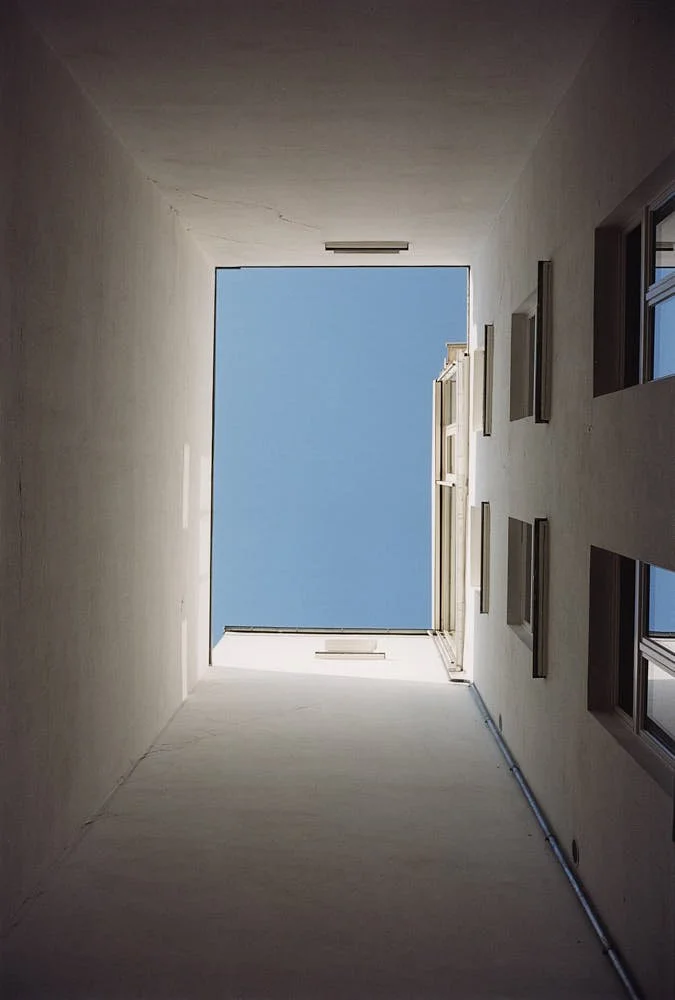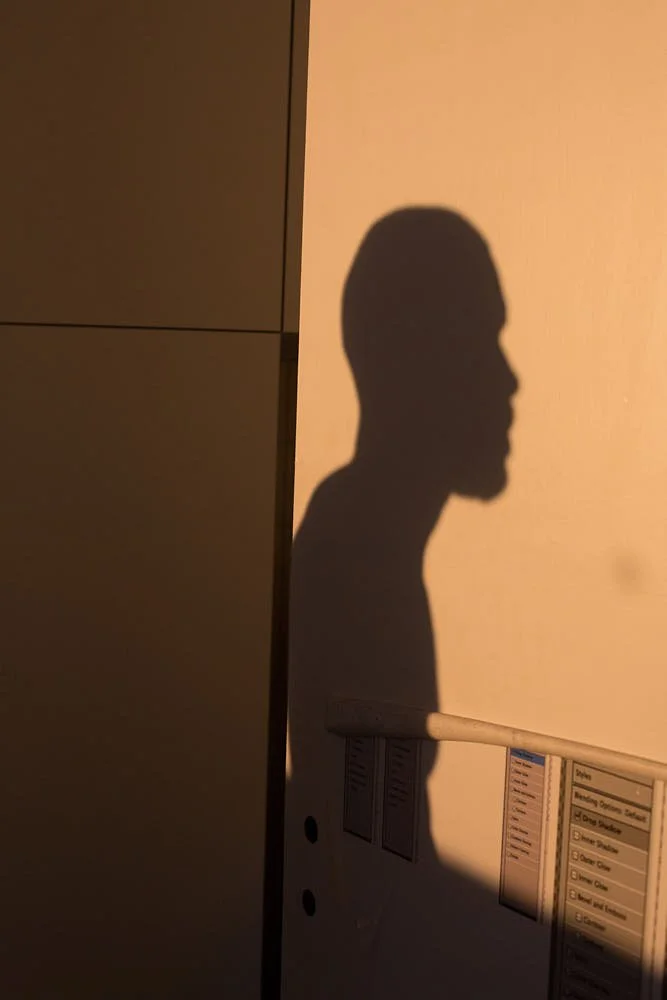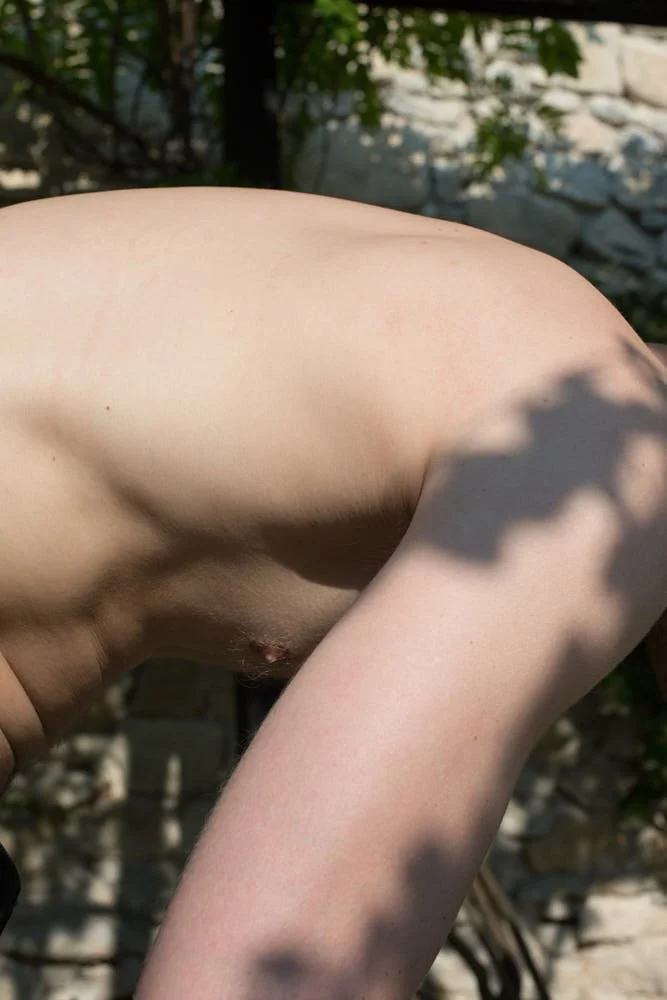WOLFGANG TILLMANS
*Passages Silencieux, Espace Louis Vuitton München
written AMANDA MORTENSON
At Espace Louis Vuitton München, the exhibition Passages Silencieux opens as an expansion of Wolfgang Tillmans’ long meditation on seeing — an installation where the act of looking becomes a physical experience, drawn across space through quiet momentum.
The artist arranges his photographs as if tracing the rhythm of time itself, building a choreography that extends from wall to wall, where perception gathers and disperses in intervals of silence. Every print, whether held by glass or left exposed to air, carries its own pulse, its own measure of gravity within a larger constellation of reflections and correspondences.
HIMMELBLAU, 2005
C-Print, 61 x 50,8 cm
© Courtesy Galerie Buchholz; Maureen Paley, London; David Zwirner, New York and Fondation Louis Vuitton, Paris
IN THE MORNING, 2015
Inkjet print, 40,6 x 30,5 cm
© Courtesy Galerie Buchholz; Maureen Paley, London; David Zwirner, New York and Fondation Louis Vuitton, Paris
The works span more than thirty years of practice, moving through portraits, abstractions, still lifes, fragments of cities, gestures of intimacy, and the mutable surfaces of nature. Tillmans dissolves the distance between these categories, allowing each image to breathe within the next. There is no direction or hierarchy in the room, only an open field of vision where light itself becomes connective tissue. The viewer walks through an environment that unfolds without announcement, where each picture transmits its own frequency — sometimes barely perceptible, sometimes charged with intensity.
Tillmans’ engagement with materiality remains central, since his earliest experiments with a photocopier in the late 1980s, his fascination has turned around the transformation of image into surface, and the subtle instability of reproduction. The works gathered here trace this continuum, from the photocopied beginnings to the camera-less abstractions of the Einzelgänger series, where exposure becomes event, and chemistry performs as both subject and form. The paper carries evidence of touch, of dust, of manipulation — every imperfection rendered luminous through repetition. In certain works, like Berlin (2006), the texture of ink and fiber becomes as vivid as skin. The print is alive, a terrain where the physical and the optical merge.
“The image is a good starting point for thinking about the world,”
Wolfgang Tillmans
Wolfgang Tillmans à la Bpi, janvier 2025
© seen by Florian Ebner / Courtesy Galerie Buchholz
Across the two floors of Espace Louis Vuitton, the installation builds a rhythm that resists narrative. The absence of chronology allows the images to exist as fragments of a continuous present, drawing together past and recent works into a single movement. Portraits from the 1990s coexist with abstractions made decades later, their proximity generating a quiet energy that pulses through the exhibition. Time feels suspended — neither archival nor contemporary, but circular, returning upon itself through the gaze of the viewer.
The Munich space introduces its own temperature, a clarity of light that sharpens perception and gives volume to the surrounding air. Tillmans’ installation responds to it with precision, letting the architecture act as a membrane for the photographs’ frequencies. The rooms are rather tuned, the sequence of walls, angles, and voids composes a subtle resonance between image, surface, and reflection. The encounter unfolds through duration rather than direction — a process of immersion rather than observation.
Passages Silencieux extends the Fondation Louis Vuitton’s Hors-les-murs programme, which carries works from its Paris collection into other cultural contexts. Within this framework, Tillmans’ exhibition reads as a continuation of his evolving dialogue with the image — a dialogue that began in motion and remains unfinished. The works gathered here propose a language of stillness that is never static, an equilibrium in which perception moves freely through the quiet intervals between images. The exhibition feels less like a retrospective than a moment of suspension — a passage between past and what is still unfolding. The silence in the title echoes through the space as atmosphere and method, shaping the experience of looking into something almost physical. The images remain open, breathing within the architecture, waiting for the viewer to step close enough to feel their pulse. Enjoy Yourself!
Passages Silencieux is on view at Espace Louis Vuitton München, Maximilianstraße 2a, from 17 October 2025 to 14 March 2026, presenting a selection of works by Wolfgang Tillmans from the Fondation Louis Vuitton Collection as part of its Hors-les-murs programme.
WET ROOM (BARNABY), 2010
Inkjet print, 40,6 x 30,5 cm
© Courtesy Galerie Buchholz; Maureen Paley, London; David Zwirner, New York and Fondation Louis Vuitton, Paris
TORSO, 2013
Inkjet print on paper, 207,5 x 138 cm
© Courtesy Galerie Buchholz; Maureen Paley, London; David Zwirner, New York and Fondation Louis Vuitton, Paris
Banner Image
PLAYGROUND LUXEMBOURG (DOS 2005), 1986
C-Print, 30,5 x 40,6 cm
© Courtesy Galerie Buchholz; Maureen Paley, London; David Zwirner, New York and Fondation Louis Vuitton, Paris










